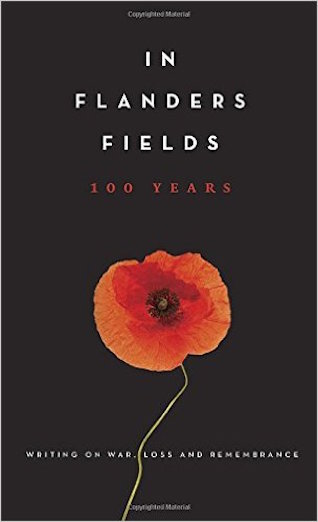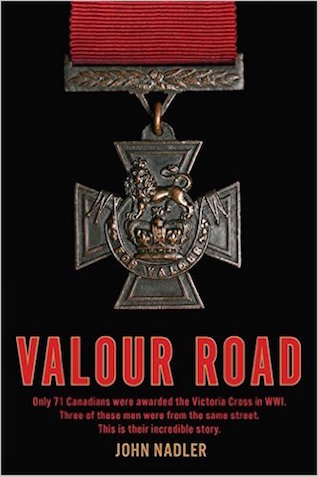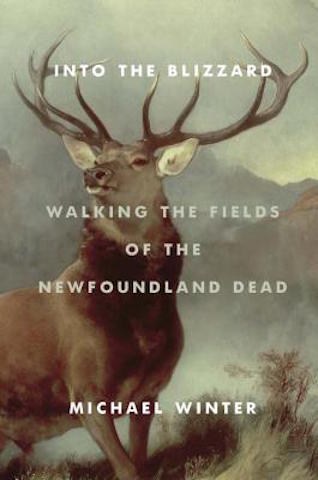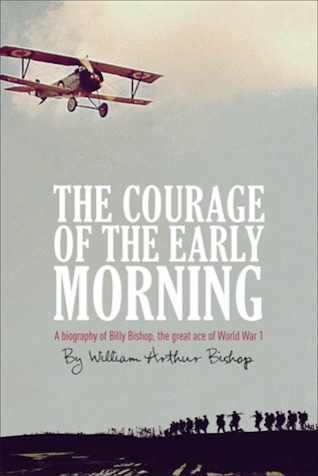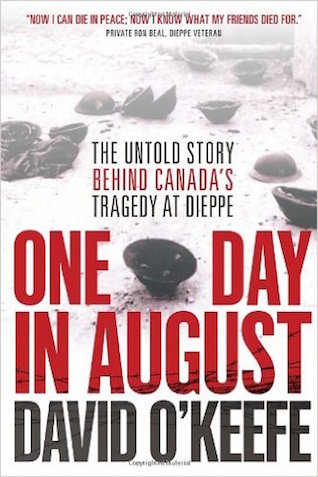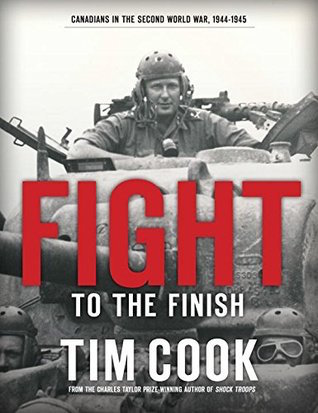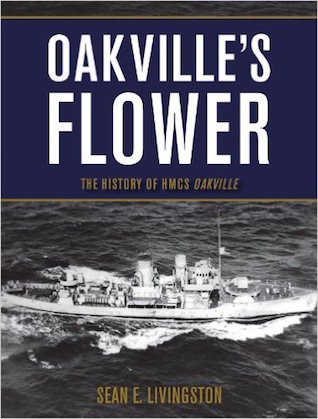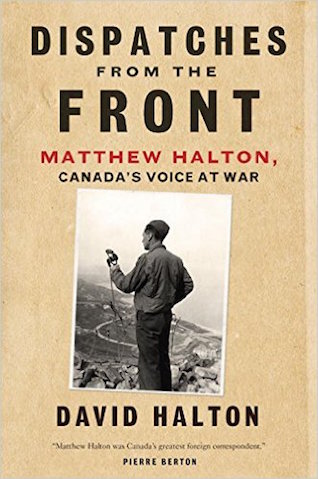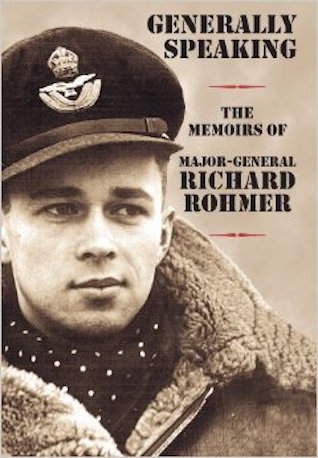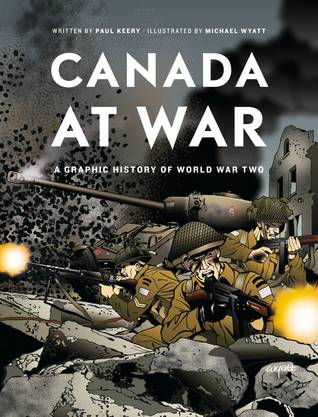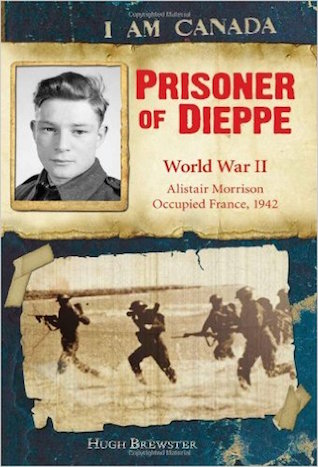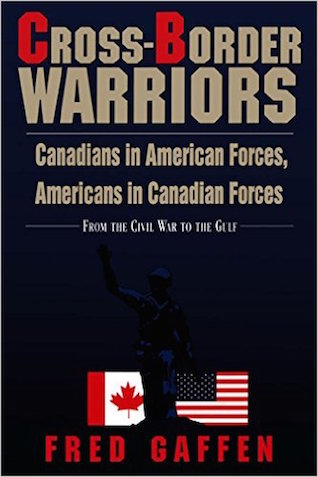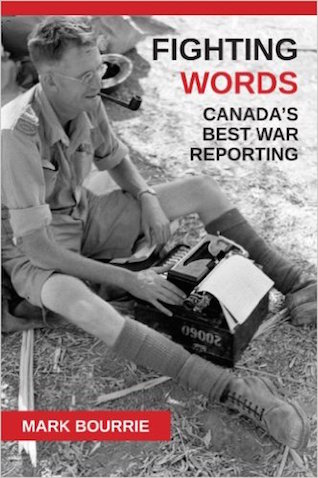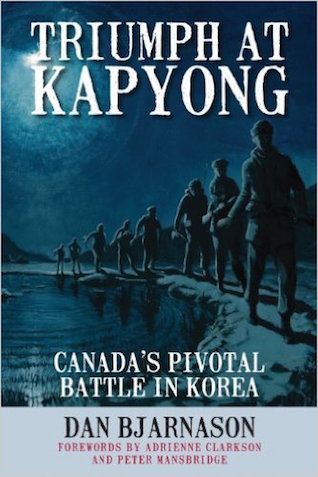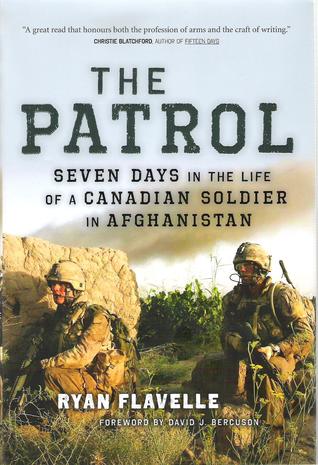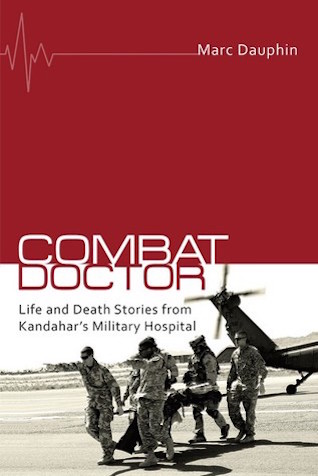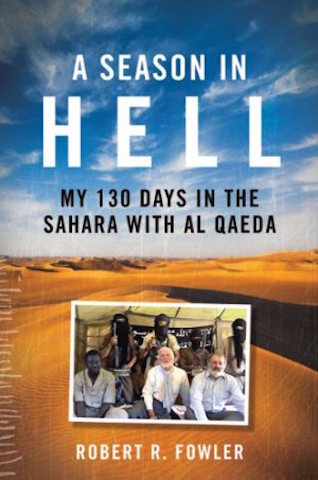In honour of this year’s Remembrance Day, I thought I would make a list of some of the great non-fiction books on Canadians in War. From memoirs to historic recounts of events, these authors bring us to the front lines and tell us the stories that have made heroes out of everyday Canadians who risked it all to fight for Canada and its allies.
WORLD WAR I
Canada’s Great War Album – Canada’s National History Society
Published to coincide with the 100th anniversary of the start of the First World War, Canada’s Great War Album is an unprecedented and remarkable collection of Canadian photographs, memorabilia, and stories of the war. Two years ago, Canada’s History Society invited Canadians to tell their family stories from the First World War. The response was overwhelming and assembled for the first time are their personal stories and photographs that together form a compelling and moving account of the war. Canada’s Great War Album also includes contributions from Peter Mansbridge, Charlotte Gray, J.L. Granatstein, Christopher Moore, Jonathan Vance, and Tim Cook. In the spirit of the bestselling 100 Photos That Changed Canada, the war that changed Canada forever is reflected here in words and pictures.
Vimy – Pierre Berton
One chill Easter dawn in 1917, a blizzard blowing in their faces, the four divisions of the Canadian Corps in France went over the top of a muddy scarp knows as Vimy Ridge. Within hours, they held in their grasp what had eluded both British and French armies in over two years of fighting: they had seized the best-defended German bastion on the Western Front.
How could an army of civilians from a nation with no military tradition secure the first enduring victory in thirty-two months of warfare with only 10,000 casualties, when the French had lost 150,000 men in their unsuccessful attempt? Pierre Berton’s haunting and lucid narrative shows how, unfettered by military rules, civilians used daring and common sense to overcome obstacles that had eluded the professionals.
Drawing on unpublished personal accounts and interviews, Berton brings home what it was like for the young men, some no more than sixteen years old, who clawed their way up the sodden, shell-torn slopes in a struggle they innocently believed would make war obsolete. He tells of the soldiers who endured horrific conditions to secure this great victory, painting a vivid picture of trench warfare. In his account of this great battle, Pierre Berton brilliantly illuminated the moment of tragedy and greatness that marked Canada’s emergence as a nation.
In Flanders Fields: 100 Years: Writing on War, Loss and Remembrance – Amanda Betts
A beautifully designed collection of essays on war, loss and remembrance to commemorate the 100th anniversary of the writing of Canada’s most famous poem.
In early 1915, the death of a young friend on the battlefields of Ypres inspired Canadian soldier, field surgeon and poet John McCrae to write “In Flanders Fields.” Within months of the poem’s December 1915 publication in the British magazine Punch it became part of the collective consciousness in North America and Europe, and its extraordinary power has endured over the decades and across generations. In this anthology, Canada’s finest historians, novelists and poets contemplate the evolving meaning of the poem; the man who wrote it and the World War I setting from which it emerged; its themes of valour, grief and remembrance; and the iconic image of the poppy.
Among the thirteen contributors: Lieutenant-General Roméo Dallaire (ret’d) writes about the emotional meaning of the poem for war veterans; Tim Cook describes the rich and varied life of McCrae; Frances Itani revisits her time in Flanders, and mines the acts of witnessing and remembering; Kevin Patterson offers a riveting depiction of the adrenaline-fueled work of a WWI field surgeon; Mary Janigan reveals the poem’s surprisingly divisive effect during the 1917 federal election; Ken Dryden tells us how lines from the poem ended up on the wall of the Montreal Canadiens’ dressing room; and Patrick Lane recalls a Remembrance Day from his childhood in a moving reflection on how war shapes us all.
Gorgeously designed in full colour with archival and contemporary images, In Flanders Fields: 100 Years will reflect and illuminate the importance of art in how we process war and loss.
Valour Road – John Nadler
The First World War lasted for four years and three months. And when it ended on November 11, 1918, the people of Pine Street, a sleepy avenue on the outskirts of Winnipeg, came to a startling realization. During the course of the conflict, young Leo Clarke, Robert Shankland, and Fred Hall, all from their street, had each received the Victoria Cross, the highest award for bravery at that time. Such a phenomenon has never been repeated anywhere in the former British empire.
Accessing original documents in his research—such as the wartime diary of Leo’s brother, Charlie, official war records, and general history—author John Nadler constructs a story of the three heroic soldiers, their families, and the enormous impact of WWI on a young Canada. This historic concurrence was so meaningful that a statue was erected in Winnipeg in tribute to these three ordinary soldiers, and their street was renamed Valour Road in their honour.
Into the Blizzard: Walking the Fields of the Newfoundland Dead – Michael Winter
“In June a few years ago I set out to visit some of the World War One battlefields of Europe – the slope and valley and river and plain that the Newfoundland Regiment trained on, and fought over and through and under.”
So begins Michael Winter’s extraordinary narrative that follows two parallel journeys, one laid on top of the other like a sketch on opaque paper over the lines of an old map. The first journey is that of the young men who came from Newfoundland’s outports, fields, villages and narrow city streets to join the storied regiment that led many of them to their deaths at Beaumont-Hamel during the Battle of the Somme on July 1, 1916. The second journey is the author’s, taken a century later as he walks in the footsteps of the dead men to discover what remains of their passage across land and through memory.
Part unconventional history, part memoir-travelogue, part philosophical inquiry, Michael Winter uniquely captures the extraordinary lives and landscapes, both in Europe and at home, scarred by a war that is just now disappearing from living memory. In subtle and surprising ways, he also tells the hidden story of the very act of remembering – of how the past bleeds into the present and the present corrals and shapes the past. As he wanders from battlefield to barracks to hospital to hotel, and finally to a bereft stretch of land battered by a blizzard back home, Winter gently but persistently unsettles us – startling us with the unexpected encounters and juxtapositions that arise from his physical act of walking through the places where the soldiers once marched, this time armed with artifacts and knowledge those earlier souls could not have, yet undone by the reality of their bodily presence beneath the earth.
In this unusual, poignant and beautiful book, Michael Winter gives us a new way of looking at a powerful piece of history that, he reminds us, continues to haunt our own lives.
The Courage of the Early Morning: A Biography of the Great Ace of World War I – William A. Bishop
A high-flying, action-packed tale for readers of all ages about the adventurous life of a Canadian icon.
William Avery Bishop survived more than 170 air battles during World War I and was given official credit for shooting down seventy-two German aircraft. Experts on aerial warfare acknowledge that his relentless air fighting techniques and skills as a brilliant individualist and marksman were unique and his record unsurpassed. He was the first man in British military history to receive the Victoria Cross, the Distinguished Service Order, and the Military Cross in one ceremony.
This remarkably objective biography, written by Bishop’s son, is a warm-hearted, entertaining, and often surprisingly outspoken account of the escapades and heroics of a man of great courage. Eddie Rickenbacker one said, “Richthofen usually waited for enemies to fly into his territory; Bishop was the raider, always seeking the enemy wherever he could be found … I think he’s the only man I ever met who was incapable of fear.”
Throughout his life Billy Bishop was something of an eccentric – a man of ebullient high spirits and feverish enthusiasm. As a boy in Owen Sound, Ontario, though, he had no aptitude for learning. His three years at the Royal Military College were disastrous – an epic of rules broken and discipline scorned. He often admitted that his special method of landing wrecked more planes than he shot down.
In the days when fliers could rightly think themselves heroes for just having the courage to go up in the rickety plans, Billy Bishop won the respect of comrades and enemies alike. He was one of the new breed of warriors who met the deadly challenge of air combat and made the airplane a decisive military weapon.
WORLD WAR II
The Great Escape: A Canadian Story – Ted Barris
A unique retelling of WWII’s most dramatic escape, told through first-hand recollections of the soldiers who experienced it.
On the night of March 24, 1944, 80 Commonwealth airmen crawled through a 336-foot-long tunnel and slipped into the forest beyond the wire of Stalag Luft III, a German POW compound near Sagan, Poland. The event became known as &8220;The Great Escape,&8220; an intricate breakout more than a year in the making, involving as many as 2,000 POWs working with extraordinary coordination, intelligence, and daring. Yet within a few days, all but three of the escapees were recaptured. Subsequently, 50 were murdered, cremated, and buried in a remote corner of the prison camp.
But most don’t know the real story behind The Great Escape. Now, on the eve of its 70th anniversary, Ted Barris writes of the key players in the escape attempt, those who got away, those who didn’t, and their families at home.
Barris marshals groundbreaking research into a compelling firsthand account. For the first time, The Great Escape retells one of the most astonishing episodes in WWII directly through the eyes of those who experienced it.
One Day in August: The Untold Story Behind Canada’s Tragedy at Dieppe – David O’Keefe
Magnificent and engrossing, One Day in August reveals in full for the first time the “Ultra Secret” story behind one of WW2’s most controversial mysteries—and one of Canada’s most sorrowful moments.
In a narrative as powerful and moving as it is authoritative, David O’Keefe rewrites history, connecting Canada’s tragedy at Dieppe with an extraordinary and colourful cast of characters—from the young Commander Ian Fleming, later to become the creator of the James Bond novels, and his team of crack commandos to the code-breaking scientists of Bletchley Park (the closely guarded heart of Britain’s wartime Intelligence and code-breaking work) to those responsible for the planning and conduct of the Dieppe Raid—Admiral John Godfrey, Lord Louis Mountbatten, British Prime Minister Winston Churchill and others. The astonishing story critically changes what we thought we knew.
For seven decades, the objective for the raid has been one of the most perplexing mysteries of WWII. In less than six hours on August 19, 1942, nearly one thousand Canadians—as well as British and Americans—lay dead or dying on the beaches around the French seaside town, with over two thousand other Canadians wounded or captured. These awful losses have left a legacy of bitterness, recrimination and controversy. In the absence of concrete reasons for the raid, myriad theories ranging from incompetence to conspiracy developed.
Over almost two decades of research, sifting through countless recently declassified Intelligence documents, David O’Keefe skillfully pieces together the story like a jigsaw puzzle to reveal the prime reason behind the raid: a highly secret mission designed, in one of Britain’s darkest times, to redress the balance of the war. One Day in August provides a thrilling, multi-layered story that fundamentally changes our understanding of this most tragic and pivotal chapter in Canada’s history.
Fight to the Finish: Canadians in the Second World War – Tim Cook
The magisterial second volume of Tim Cook’s definitive account of Canadians fighting in the Second World War.
Historian Tim Cook displays his trademark storytelling ability in the second volume of his masterful account of Canadians in World War II. Cook combines an extraordinary grasp of military strategy with a deep empathy for the soldiers on the ground, at sea and in the air. Whether it’s a minute-by-minute account of a gruelling artillery battle, vicious infighting among generals, the scene inside a medical unit, or the small details of a soldier’s daily life, Cook creates a compelling narrative. He recounts in mesmerizing detail how the Canadian forces figured in the Allied bombing of Germany, the D-Day landing at Juno beach, the taking of Caen, and the drive south.
Featuring dozens of black-and-white photographs and moving excerpts from letters and diaries of servicemen, Fight to the Finish is a memorable account of Canadians who fought abroad and of the home front that was changed forever.
The Necessary War – Tim Cook
Tim Cook, Canada’s leading war historian, ventures deep into the Second World War in this epic two-volume story of heroism and horror, loss and longing, and sacrifice and endurance.
Written in Cook’s compelling narrative style, this book shows in impressive detail how soldiers, airmen, and sailors fought–the evolving tactics, weapons of war, logistics, and technology. He also examines the war as an engine of transformation for Canada. With a population of fewer than twelve million, Canada embraced its role as an arsenal of democracy, exporting war supplies, feeding its allies, and raising a million-strong armed forces that served and fought in nearly every theatre of war. The six-year-long exertion caused disruption, provoked nationwide industrialization, ushered in changes to gender roles, exacerbated the tension between English and French, and forged a new sense of Canadian identity. It showed that Canadians were willing to bear almost any burden and to pay the ultimate price in the pursuit of victory.
Oakville’s Flower: The History of HMCS Oakville – Sean E. Livingston
This is an in-depth look at the history and legacy of HMCS Oakville, a Canadian World War II corvette that fought in the Battle of the Atlantic, and was one of the few corvettes to sink a U-boat. From its creation through its christening off the shores of its namesake town, its exploits at sea, the famous encounter with U94, and the ship’s lackluster end, Oakville’s is a story that showcases not only our nation’s proud naval heritage, but also the importance of remembrance.
Oakville’s Flower sets the scene of naval war in the Atlantic ― the battles between convoys, stealthy U-boats, and the lowly corvettes that formed the backbone of the Royal Canadian Navy. We follow Oakville, one of those corvettes, through its rise and fall as a Canadian naval legend, to its revival in the town of Oakville, championed by the local Sea Cadet Corps that shares its name and safeguards its legacy.
Dispatches from the Front: The Life of Matthew Halton, Canada’s Voice at War – David Halton
As senior war correspondent for the Canadian Broadcasting Corporation during the Second World War, Matthew Halton reported from the front lines in Italy and Northwest Europe and became “the voice of Canada at war.” His gripping, passionate broadcasts chronicled the victories and losses of Canadian soldiers and made him a national hero.
Born in Pincher Creek, Alberta, in 1904, Halton was to achieve the fastest ever ascent in Canadian journalism. A year after joining the Toronto Daily Star as a cub reporter, he was in Berlin to write about Adolf Hitler’s seizure of power and – long before most other correspondents – to begin a prophetic series of warnings about the Nazi regime. For more than two decades, he witnessed first-hand the major political and military events of the era. He covered Europe’s drift to disaster, including the breakdown of the League of Nations, the Spanish Civil War, the sellout to Fascism at Munich, and the Nazi takeover of Czechoslovakia. Along the way he interviewed Franklin Delano Roosevelt, Hermann Göring, Neville Chamberlain, Charles de Gaulle, Mahatma Gandhi, and dozens of others who shaped the history of the century.
In Dispatches from the Front, acclaimed former CBC correspondent David Halton, Matthew’s son, also examines his father’s often tumultuous personal life. He unravels the many paradoxes of his personality: the war correspondent who loathed bloodshed yet became addicted to the thrill of battle; the loner who thrived in good company; and, in some ways most puzzling of all, the womanizer with a deep and enduring love for his wife.
Drawn from extensive interviews and archival research, this definitive biography is a captivating portrait of the life of one of Canada’s most accomplished journalists.
Almost a Great Escape: A Found Story – Tyler Trafford
Following his mother’s death in 2004, Tyler Trafford discovers an album of old letters and creased photographs that reveal a mother he never knew, a man he’s never heard of, and a love affair doomed by class and circumstance. The letters are from Jens Müller, a Norwegian pilot who trained in Canada during the early days of World War II, one of only three prisoners who would make it home after The Great Escape.
In Almost a Great Escape, Trafford takes us on a journey of emotional discovery and dramatic disclosure as he reconstructs his mother’s life, from her youth as a wealthy Montreal debutante to her final days as a broken but unbent casualty of a loveless marriage. His search for answers takes him across Canada and then across the ocean to Norway, hoping to learn more about the mystery of this secret relationship. Written with a fluidity fueled by heart-wrenching honesty, Trafford’s unconventional memoir confirms that while you can survive your past, you can never escape from it.
Almost a Great Escape includes photographs as well as excerpts and reproductions of telegrams and letters Jens sent from England and Stalag Luft III.
Restitution: A Family’s Fight for Their Heritage Lost in the Holocaust – Kathy Kacer
The story of the Reesers, a Jewish family who emigrated to Canada from Czechoslovakia on the eve of WWII. They fled the Nazis and left behind four valuable oil paintings. It would take years for Mari Reeser, and then her son Karl, to retrieve them.
Not All of Us Were Brave – Stan Scislowski
This is the story of a young man’s journey through World War II. It covers a wide cross section of the strengths and weaknesses of young men not attuned to killing, and not mentally prepared to face the horror of seeing their close friends die violent deaths in battle. The story is about the hopes, the prayers, the fears, the daily miseries and even the lighter moments that the aspiring heroes of the Perth Regiment experienced on the Italian front as part of 11th Infantry Brigade, 5th Canadian Armoured Division.
As the title suggests, from his first battle inoculation Private Stan Scislowski realizes he is not destined for the heroic role to which he once aspired. His fears affect him deeply: his burning dream of returning home a national hero becomes more and more improbable, and his attempts to come to terms with his un-heroic nature make the war as much a mental battle as a physical one. His story is much like that of the overwhelming number of Canadians who found themselves in the cauldron of war, serving their country with all the strength they could find, even when that strength was fading fast.
Not All of Us Were Brave focuses not on the heroes, but on the ordinary soldiers who endured the mud, the misery, the ever-present fear, the inspiration, and the degradation. The narrative holds nothing back: the dirty linen is aired along with the clean; the light is shown alongside the dark. It shows what war is all about.
Generally Speaking: The Memoirs of Major-General Richard Rohmer – Richard Rohmer
Major-General Richard Rohmer is arguably Canada’s most decorated citizen. A commander of the Order of Military Merit and an Officer of the Order of Canada, his career began in World War II where he earned the reputation as one of Canada’s top Mustang reconnaissance pilots. For his service, which includes flying over the beaches of Normandy on D-Day, he received the Distinguished Flying Cross. A lawyer, litigator, journalist and best-selling author of 28 fiction and non-fiction books, Rohmer has met with such public figure as Queen Elizabeth, General George Patton, “Intrepid” Sir William Stephenson, Presidents Eisenhower, Regan, and Clinton, and has flown with John F. Kennedy. He is currently a member of the board of directors of Hollinger Inc. Recently, he chaired the 60th anniversary of the D-Day Advisory Committee to the Minister of Veterans Affairs. His autobiography, Generally Speaking: The Memoirs of Richard Rohmer, is written with Rohmer’s characteristic frankness and insight.
Canada at War: A Graphic History of World War Two – Paul Keery
A beautifully crafted graphic novel, tracing the achievements of the Canadian Forces in the Second World War.
In 1914, Canada went to war as a subject of Britain. In 1939, it made the choice to fight all on its own.Canada at War follows the developments and setbacks, wins and losses, of a nation learning to stand up for itself in the midst of the most difficult war of the 20th century.
In graphic-novel format, fully illustrated and in full colour, Canada at War shows the growth of a nation’s army, navy and air force through movingly depicted triumphs and tragedies. From the disheartening losses at Dieppe and Hong Kong through the Battle of the Atlantic and the invasion of Sicily, it focuses on the human dimension of the key battles and decisions that ultimately swung the war in the Allies’ favour.
This poignant graphic account ends, after the victories of D-Day and Juno Beach and the liberation of Europe, with a final reckoning of the legacy these storied years have had on a country forged through war. Aimed at both adult and young adult readers, this very human history tells the stories behind some of this country’s most distinguishing military moments.
Great Canadian War Heroes: Victoria Cross Recepients of World War II – Tom & Gail Douglas
Great Canadian War Heroes tells the amazing stories of the 16 Canadians who received the Victoria Cross during WWII. They came from all walks of life and from various ranks within the Canadian Forces, but they all had one thing in common: each displayed exceptional bravery in the face of the enemy.
Men of Steel: Canadian Paratroopers in Normandy, 1944 – Bernd Horn
Take a trip back in time to the chaos and destruction of the greatest invasion in military history, viewed through the lens of Canadian paratroopers. Men of Steel is the exciting story of some of Canada’s toughest and most daring soldiers in the Second World War.
In the dead of night, on 5/6 June 1944, hundreds of elite Canadian paratroopers hurled themselves from aircraft behind enemy lines. That daring act set the stage for the eventual success of the Allied invasion fleet. From aircraft formations striking out from England on a turbulent flight across the English Channel to the tumultuous drop over Occupied Europe and deadly close combat in the Normandy countryside, Men of Steel is a detailed account of Canadian paratroopers and their instrumental role in D-Day.
Ortona: Canada’s Epic World War II Battle – Mark Zuehlke
A masterful retelling one of the major victories of Canadian troops over the German army’s elite division during WWII.
In one blood-soaked, furious week of fighting, from December 20 to December 27, 1943, the 1st Canadian Infantry Division took the town of Ortona, Italy, from elite German paratroopers ordered to hold the medieval port town at all costs. Infantrymen serving in the Loyal Edmonton Regiment and the Seaforth Highlanders, supported by tankers of the Three Rivers Regiment, moved from house to house in hand-to-hand combat amid heavy shelling and wrested the town from the grip of the fierce German defenders. Getting into Ortona had been a battle of its own. Ortona, the pearl of the Adriatic, stands on a promontory impregnable from three sides, with seacliffs on the north and east, and a deep ravine on the west. The Canadian infantrymen, drawn from virtually every corner of Canada, attacked from the south under the command of Major-General Chris Vokes, fighting across narrow gullies, mud-choked vineyards and olive groves, into the narrow streets of Ortona itself. When the vicious battle was over, 2605 Canadians were dead or wounded. But the town that had become known as “Little Stalingrad” was now in Allied hands.
A Perfect Hell: The True Story of the Black Devils, the Forefathers of the Special Forces – John Nadler
It’s 1942 and Hitler’s armies stand astride Europe like a colossus. Germany is winning on every front. This is the story of how one of the world’s first commando units, put together for the invasion of Norway, helped turn the tide in Italy.
1942. When the British generals recommend an audacious plan to parachute a small elite commando unit into Norway in a bid to put Nazi Germany on the defensive, Winston Churchill is intrigued. But Britain, fighting for its life, can’t spare the manpower to participate. So William Lyon MacKenzie King is contacted and asked to commit Canadian troops to the bold plan. King, determined to join Roosevelt and Churchill as an equal leader in the Allied war effort, agrees.
One of the world’s first commando units, the First Special Service Force, or FSSF, is assembled from hand-picked soldiers from Canadian and American regiments. Any troops sent into Norway will have to be rugged, self-sufficient, brave, and weather-hardened. Canada has such men in ample supply.
The all-volunteer FSSF comprises outdoorsmen — trappers, rangers, prospectors, miners, loggers. Assembled at an isolated base in Helena, Montana, and given only five months to train before the invasion, they are schooled in parachuting, mountain climbing, cross-country skiing, and cold-weather survival. They are taught how to handle explosives, how to operate nearly every field weapon in the American and German arsenals, and how to kill with their bare hands.
After the Norway plan is scrapped, the FSSF is dispatched to Italy and given its first test — to seize a key German mountain-top position which had repelled the brunt of the Allied armies for over a month. In a reprise of the audacity and careful planning that won Vimy Ridge for the Canadians in WWI, the FSSF takes the twin peaks Monte la Difensa and Monte la Remetanea by storming the supposedly unscalable rock face at the rear of the German position, and opens the way through the mountains.
Later, the FSSF will hold one-quarter of the Anzio beachhead against a vastly superior German force for ninety-nine days; a force of only 1,200 commandos does the work of a full division of over 17,000 troops. Though badly outnumbered, the FSSF takes the fight to the Germans, sending nighttime patrols behind enemy lines and taking prisoners. It is here that they come to be known among the dispirited Germans as Schwartzer Teufel (“Black Devils”) for their black camouflage face-paint and their terrifying tactic of appearing out of the darkness.
John Nadler vividly captures the savagery of the Italian campaign, fought as it was at close quarters and with desperate resolve, and the deeply human experiences of the individual men called upon to fight it. Based on extensive archival research and interviews with veterans, A Perfect Hell is an important contribution to Canadian military history and an indispensable account of the lives and battlefield exploits of the men who turned the tide of the Second World War.
I Am Canada: Prisoner of Dieppe: Word War II, Alistair Morrison, Occupied France, 1942 – Hugh Brewster
A young soldier’s gritty account of “the bloodiest nine hours in Canadian military history” — the tragic Dieppe raid of WWII
Alistair “Allie” Morrison lets his friend Mackie talk him into enlisting for WWII, even though he’s only 18. After months of endless training Allie’s eager for battle. But his first action is not just any battle… it’s the disastrous raid on the German-held port of Dieppe.
He and his unit are under orders to take one of the main beaches, but they disembark from their landing craft onto a killing ground. As Allie gets his bearings and makes sense of the horror on every side, he witnesses friends advance into a massacre.
All told, almost a thousand Canadian soldiers died that day. In the resulting chaotic evacuation, Allie and Mackie are captured as POWs and sent to Stalag VIIIB in Germany. Still shell-shocked from their fighting, the soldiers struggle to maintain their courage. Others, like Mackie, are determined to plot an escape and outwit their captors, at any cost.
Historian Jack Granatstein vetted Prisoner of Dieppe to ensure historical accuracy.
KOREAN WAR
Cross-Border Warriors – Fred Gaffen
For well of a hundred years, Canadians and Americans have crossed the border that separates their two countries to serve in one another’s armed forces. The American Civil War, the two world wars, Korea, Vietnam, the Gulf War – Cross-Border Warriors presents anecdotes, letters, and diaries by or about individuals who left family and native land to engage in these far-away struggles. There was Emma Edmonds, a woman from New Brunswick who disguised herself as a man and served as a field nurse and spy for the Yankees during the civil war; American Lucien Thomas, who flew 400 combat missions in WW II and Korea; Fred Demara, “The Great Impostor,” who used his surgical skills on unsuspecting patients … More than ninety photos, together with Fred Gaffen’s analysis of this cross-border phenomenon, complement the soldiers’ words.
Deadlock in Korea – Ted Baris
Between 1950 and 1953, nearly 30,000 Canadian volunteers joined the effort to contain communist incursions into South Korea and support the fledgling United Nations. All the services were there and all served with distinction. The Royal Canadian Navy led a daring rescue of troops from the port of Chinnampo in 1950; members of the Princess Patricia?s Canadian Light Infantry won the highest US battle honour at Kap?yong in April 1951; the Vandoos turned the tide atHill 355; and twice?at Hill 355 in October 1952 and Hill 187 in May 1953?members of the Royal Canadian Regiment held firm against forces that greatly outnumbered them. The navy and the infantry were bolstered by the Royal Canadian Horse Artillery and Lord Strathcona?s Horse tanks, as well as members of the service, medical, engineers, provost, chaplain and intelligence corps. Still more, from the RCAF Thunderbird Squadron, took part in the Korean Airlift?three years of non-stop supply flights across the Pacific.
Fighting Words: Canada’s Best War Reporting – Mark Bourrie
Fighting Words is a collection of the very best war journalism created by or about Canadians at war. The collection spans 1,000 years of history, from the Vikings’ fight with North American Natives, through New France’s struggle for survival against the Iroquois and British, to the American Revolution, the War of 1812, the Rebellions of Lower and Upper Canada, the Fenian raids, the North-West Rebellion, the First World War, the Second World War, Korea, peacekeeping missions, and Afghanistan.
Each piece has an introduction describing the limits placed on the writers, their apparent biases, and, in many cases, the uses of the article as propaganda. The stories were chosen for their impact on the audience they were written for, their staying power, and, above all, the quality of their writing.
Korea – John Melady
The Korean War (1950-53) forms a little-known but exciting part of Canada’s military history. The heroism and sacrifice of Canadians who fought in this conflict as part of the United Nations force has often been ignored. In this lively, anecdotal book, John Melady combines archival material and interviews with many Korean veterans. The result is a vivid, intensely human account of the war from its first days, to heroic battles such as Kapyong, to fascinating and more obscure incidents such as the Koje prison camp insurrection, as well as personal stories of doctors, POWs, and journalists who witnessed the conflict, including Pierre Berton and Rene Levesque.
The men from across Canada who served and fought were forever changed by what they saw and experienced in this faraway land. Army, navy, air force all receive their share of long-overdue praise in this important book, which was originally published in 1983 but is now fully revised.
Triumph at Kapyong – Dan Bjarnason
April 24th, 1951,was a lonely, moon-lit night in Korea. On a godforsaken hill, a few hundred surrounded Canadian soldiers waited for the fight of their lives to begin. Soon, Chinese communist troops in their thousands, swarmed around them, plunging straight towards the Korean capital, Seoul. These Canadians were all that blocked the way.
This is the story of the first battle by Canada’s first soldiers in the Korean War: the 2nd Battalion of Princess Patricia’s Canadian Light Infantry. These volunteers were straight from Central Casting: truck drivers, construction workers, kids just out of high school, and bored farm boys. Outnumbered and outgunned, this people’s army of amateurs beat off some of the toughest troops on earth.
This battle that’s become a legend takes its name from a nearby peanut-sized village: Kapyong.
It’s become a mythic Canadian story, except this is mythology that is true and real.
AFGHANISTAN
Australia and Canada in Afghanistan: Perspectives on a Mission – Jack Cunningham (Editor), William Maley (Editor)
Afghanistan is a long way from both Canada and Australia, but from 2001, fate conspired to bring the three countries together. Following the attacks of September 11, 2001, Australia and Canada joined the U.S. and other Western allies in attacking al-Qaeda bases in Afghanistan.
Operation Enduring Freedom began on October 4, 2001, but this was only the beginning of a much longer engagement in Afghanistan for both Canada and Australia, with a legacy much more ambiguous than the initial campaign had promised.
Australia and Canada in Afghanistan: Perspectives on a Mission offers twelve essays from distinguished experts and decision-makers involved in the war. Wide-ranging in scope, their work offers fresh analyses of the Afghan War and on Australia’s and Canada’s contributions to it.
The Dogs are Eating Them Now: Our War in Afghanistan – Graeme Smith
With a new foreword by the author, The Dogs are Eating Them Now is a highly personal narrative of our war in Afghanistan and how it went dangerously wrong. Written by a respected and fearless former foreign correspondent who has won multiple awards for his journalism (including an Emmy for the video series “Talking with the Taliban”) this is a gripping account of modern warfare that takes you into back alleys, cockpits, and prisons –telling stories that would have endangered his life had he published this book while still working as a journalist. Smith was not simply embedded with the military: he operated independently and at great personal risk to report from inside the war, and the heroes of his story are the translators, guides, and ordinary citizens who helped him find the truth. They revealed sad, absurd, touching stories that provide the key to understanding why the mission failed to deliver peace and democracy.
From the corruption of law enforcement agents and the tribal nature of the local power structure to the economics of the drug trade and the frequent blunders of foreign troops, this is the no-holds-barred story from a leading expert on the insurgency.
The Patrol – Ryan Flavelle
“Nothing can prepare a person for the reality of bloody, concussive warfare. . . . Those who like war are aptly named warriors. Some, like me, are fated never to be warriors, as we are more afraid of war than fascinated by it. But I have the consolation that I have walked with warriors and know what kind of men and women they are. I will never be a warrior, but I have known war.” (The Patrol)
In 2008, Ryan Flavelle, a reservist in the Canadian Army and a student at the University of Calgary, volunteered to serve in Afghanistan. For seven months, twenty-four-year-old Flavelle, a signaller attached to the Princess Patricia’s Canadian Light Infantry, endured the extreme heat, the long hours and the occasional absurdity of life as a Canadian soldier in this new war so far from home. Flavelle spent much of his time at a Canadian Forward Operating Base (FOB), living among his fellow soldiers and occasionally going outside the wire. For one seven-day period, Flavelle went into Taliban country, always walking in the footsteps of the man ahead of him, meeting Afghans and watching behind every mud wall for a sign of an enemy combatant.
The Patrol is a gritty, boots-on-the-ground memoir of a soldier’s experience in the Canadian Forces in the twenty-first century. In the tradition of Farley Mowat’s The Regiment and James Jones’ The Thin Red Line, this book isn’t merely about the guns and the glory—it is about why we fight, why men and women choose such a dangerous and demanding job and what their lives are like when they find themselves back in our ordinary world.
Combat Doctor: Life and Death Stories from Kandahar’s Military Hospital – Marc Dauphin
An emergency room doctor recounts harrowing stories about his time at a combat hospital in Kandahar.
Combat Doctor presents the stories of the victims of the War in Afghanistan, as told by the last Canadian Officer Commanding at the Kandahar Role 3 Multinational Hospital.
In 2009, Marc Dauphin, an experienced emergency-room physician, served a full tour at the combat hospital in Kandahar. During his time there, he dealt with injuries more horrific than he had ever seen during his civilian experience. He and the Role 3 Hospital’s international staff saw an unparalleled number of severe casualties and yet maintained a survival rate of 97 percent – a record for all times and all wars.
It is impossible to remain unmoved by Marc Dauphin’s descriptions of those he treated: the terrified children, the stoic soldiers, those mutilated almost beyond help. Each story is powerful, vividly told, and unique.
First Soldiers Down: Canada’s Friendly Fire Deaths in Afghanistan – Rob Corbett
On April 18, 2002, Alpha Company, Third Battalion of the Princess Patricia’s Canadian Light Infantry, was on a training exercise at Tarnak Farms, a former Taliban artillery range in southern Afghanistan. The exercise had been underway for nearly seven hours when two American fighter pilots flew overhead. One, Major Harry Schmidt, saw the artillery fire below, and thinking he was under attack, dropped a laser-guided bomb.
Four Canadian soldiers died that night, the first Canadian combat fatalities since the Korean War. For many in Canada the tragedy signalled the true beginning of Canada’s lengthy combat mission in Afghanistan.
First Soldiers Down recounts what happened that evening through archival material and the recollections of troops. It also tells the personal stories of the fallen Sergeant Marc Lger, Corporal Ainsworth Dyer, Private Richard Green, and Private Nathan Smith as well as what happened to the loved ones of each of the four in the decade since the incident.
March Forth – Trevor and Debbie Greene
At the age of forty-one, Trevor Greene, a journalist and a reservist in the Canadian Army, deployed to Kandahar with the 1st Battalion PPCLI Battle Group. On March 4th, 2006, while meeting with village elders in a remote village in Kandahar Province, Greene removed his helmet out of respect, confident that a centuries-old pact would protect him from harm. Without warning, a teenage boy under the influence of the Taliban came up behind Greene and swung a rusty axe deep into his skull, nearly splitting his brain in two.
Trevor’s fiancee, Debbie, was initially told that he would not live. When he survived she was told that he would never come out of his coma, let alone be able to move on his own. But Debbie never left Trevor’s side, and after years of rehabilitation, setbacks, and crises, Trevor learned to talk and move again. In July 2010, he stood up at his own wedding, Debbie at his side, and his daughter, Grace, carrying their rings down the aisle as their flower girl.
March Forth is a remarkable story of love, told in two voices: Trevor’s, up until the attack that changed their lives; and Debbie’s, as she works tirelessly to rehabilitate the man she loves. Together, Trevor and Debbie have written the next chapter in their remarkable story.
A Season in Hell – Robert R. Fowler
For decades, Robert R. Fowler was a dominant force in Canadian foreign affairs. In one heart-stopping minute, all of that changed. On December 14, 2008, Fowler, acting as the UN Secretary General’s Special Envoy to Niger, was kidnapped by Al Qaeda, becoming the highest ranked UN official ever held captive. Along with his colleague Louis Guay, Fowler lived, slept and ate with his captors for nearly five months, gaining rare first-hand insight into the motivations of the world’s most feared terror group. Fowler’s capture, release and subsequent media appearances have helped shed new light on foreign policy and security issues as we enter the second decade of the “War on Terror.”
A Season in Hell is Fowler’s compelling story of his captivity, told in his own words, but it is also a startlingly frank discussion about the state of a world redefined by clashing civilizations.
To find these books and others like it, check out Amazon.com.



